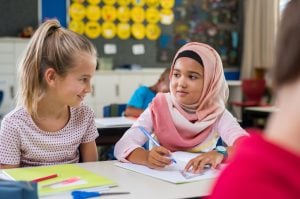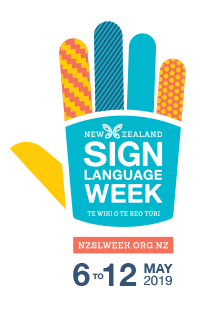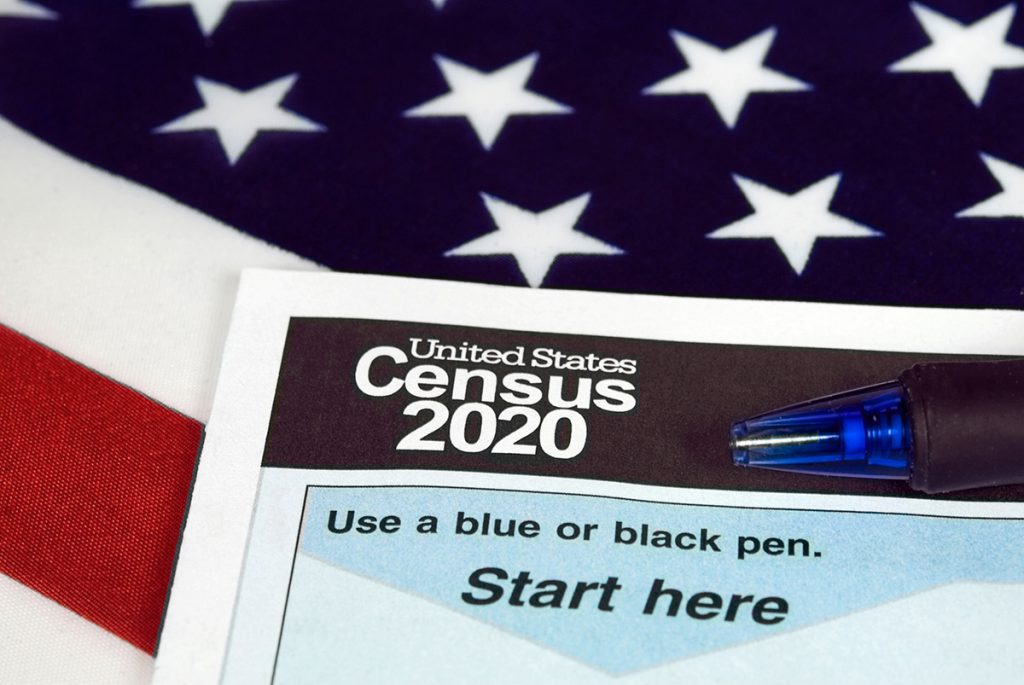The benefits of free, voluntary reading are undeniable, but finding books that are interesting and exciting without being too advanced can be a challenge. This is where leveled readers really come to the fore—they are designed to deliver great stories and interesting nonfiction to learners at a comprehensible level.
If you only get your students to do one thing this summer, get them to read some books they will enjoy. The following publishers invite you to share their readers:
Renaissance
Renaissance® is a leader in pre-K–12 literacy, helping students of all ability levels—including struggling readers, English learners, and gifted and talented students—grow the strong reading skills needed for success in school and in life.
Renaissance myON® Reader is a student-centered, personalized literacy platform that offers unlimited access to thousands of enhanced digital books at a wide variety of Lexile® reading levels. Students get 24/7 access to thousands of fiction and nonfiction titles, with texts available in English, Spanish, and other languages. Quick assessments match students with books according to their personal interests and the just-right reading levels to grow their literacy skills. Built-in scaffolds—including a searchable dictionary and professionally recorded audio modeling fluent reading—help English learners grow their proficiency and confidence. Rich reporting makes it easy for educators to monitor student reading and growth.
Renaissance myON® News, powered by News-O-Matic, delivers engaging nonfiction reading through a series of five daily news articles, 52 weeks a year. Every article is written at three Lexile reading levels and vetted by a child psychologist to be safe and appropriate for young readers. All articles are also available in English, Spanish, and French, with audio supports for English learners and struggling readers. Integrated multimedia, such as videos, maps, and photo galleries, help further student understanding. Helpful teacher guides make it easy to incorporate articles into small-group or whole-class lessons.
Renaissance Accelerated Reader® puts best practices for independent reading practice into action. Personalized goals help keep students engaged and motivated, while quizzes for nearly 200,000 books and articles at a wide range of ATOS® and Lexile reading levels support student agency and choice. Many quizzes are available in Spanish for English learners and bilingual programs. Interactive reports provide educators with unparalleled insights to support and accelerate growth for all students.
www.renaissance.com
Scholastic
Scholastic Education believes that the development of robust literacy skills is at the very heart of empowering children to thrive in school and in life. For nearly 100 years, it has been our mission to help all children learn—to explore their own questions, make informed decisions, and imagine lives beyond the ones they live. We proudly partner with schools and districts through our research-informed literacy instruction, digital programs, and authentic texts; professional learning courses, coaching, and books; and family and community engagement outreach and resources paired with take-home books.
Guided Reading en español, Second Edition
Grades K–6
The new Guided Reading en español, second edition—with more than 70% of titles originally written in Spanish—engages students with culturally relevant texts, builds confidence, and fosters a love of reading. Bilingual instructional materials, including Spanish and English teacher’s guides and teaching cards for every title, help teachers support English learners and students in dual-language classrooms during small-group instruction.
Guided Reading Text Types, Second Edition
Grades K–6
The new Guided Reading Text Types, second edition, features a wide range of genres to support literacy during small-group differentiated instruction. From picture books and photo essays to short stories, graphic novels, and plays, students explore different text types as they grow as independent readers. Robust teaching materials help teachers make the most of small-group instruction with teaching cards that identify essential comprehension skills and support whole child growth with social-emotional learning connections to each and every title.
Next Step Guided Reading Assessment
Grades K–6
Developed by leading literacy experts Jan Richardson, PhD, and Maria Walther, EdD, the new Next Step Guided Reading Assessment helps teachers assess students’ reading levels in four easy steps and then target instructional next steps. The digital management system gives teachers the power to make data-driven decisions while providing administrators with reports to monitor progress in schools throughout the district.
scholastic.com/education
Stretch Reading Growth with Precisely Leveled Readers
Teachers around the world trust the Rigby PM series for its precise leveling that empowers them to challenge their students appropriately. The Rigby PM series is an ideal instruction within the balanced literacy framework and allows students to decode and read with fluency and comprehension across a wide range of text types and genres. The PM series has taken this complex model and broken it down into 30 incremental levels, spanning grades K through five.
Build Students’ Reading Confidence
Everyone who has been in the classroom knows how challenging it can be to find a perfect match between students’ reading levels, their interests, and available books. The PM series makes it easy to find just the right book for every student in class by offering a wide range of topics and genres across all its levels. Additionally, students will find books that mirror them and their communities. The series gives students access to a variety of approachable text types and genres with relatable, culturally diverse characters.
Strict Leveling Criteria
Pinpoint the right book to stretch students’ reading abilities with over twelve leveling factors, including a 1:20 ratio of unknown to known words in each level, predictable text layout in relation to supportive illustrations, and a steady introduction of high-frequency words. With specific criteria for each Rigby PM level, each book is intentionally written to meet a given level’s criteria.
Effective Guided Reading Instruction
Teachers can systematically help their students become proficient readers with the unparalleled care and quality in precise leveling offered by the PMs. New are the easy-to-use eight-page Take-and-Teach lesson plans with clearly outlined close reading questions, ELL scaffolds, and project-based activities to help students take ownership of their learning.
hmhco.com/RigbyPM
Engage Literacy
Engage Literacy (English) is a comprehensive literacy program (K–5) from Capstone, appropriate for individual, small-group, and whole-group learning. The core of Engage Literacy is its curriculum-linked nonfiction and fiction leveled readers spanning reading levels one to 30 (guided reading levels A–V) with matching oral running records, black-line masters, and teaching notes. From levels two to 30, corresponding fiction or nonfiction titles are also thematically linked.
Through engaging and high-interest texts, rhymes, poems, songs, chants, and recurring characters, children will become active participants in their own learning and in the reading process.
By including both fiction and nonfiction, the materials in Engage Literacy stretch children’s thinking and meet Common Core Standards for both informational text and literature with meaningful and purposeful group activities. Engage Literacy’s careful leveling ensures that children are exposed to texts that match their developmental reading levels, enabling greater potential for reading success, enhancing fluency, and making reading enjoyable.
All texts have been developed using carefully graded vocabulary lists, e.g., the word go is introduced at level one and going is introduced at level four. Therefore, children build up a bank of high-frequency words, providing a smooth transition to higher-level texts. As they move through the levels in Engage Literacy, new words are introduced at a ratio of 1:20: one new word is introduced for every 20 known words. Children are able to build on their prior knowledge and make new connections based on these previous understandings. Engage Literacy also includes extending vocabulary, or a progressive academic vocabulary list, including words such as draw, make, and write, which are essential for early readers to successfully understand and complete academic tasks independently.
Visit EngageLiteracy.com to look inside these leveled readers. You will find the program scope and sequence, skill alignment, oral running record instruction, text samples, and much more support for your literacy instruction.
i-Ready®
Engaging instruction with proven results
i-Ready Instruction delivers powerful online lessons that motivate students on their path to proficiency and growth. Driven by insights and practical data from the i-Ready Diagnostic, i-Ready’s online K–8 lessons provide tailored instruction that meets students where they are in their learning journeys and encourages them as they develop new skills. Students who used i-Ready Instruction experienced substantial learning gains compared to students who did not. Students receiving recommended levels of i-Ready Instruction experienced 39% greater gains in English language arts (ELA). These results were supported by strong effect sizes and statistically significant gains. This research meets the criteria for Level 3: Promising Evidence under the Every Student Succeeds Act (ESSA).
Built for the standards, designed to motivate.
- Built based on cutting-edge research into effective online learning practices, i-Ready’s online lessons are challenging, supportive, and engaging for students of all ages and provide support for English learners.
- Helpful instruction at targeted interaction points models strategies and keeps students focused throughout the lesson.
- Systematic practice and scaffolded feedback promote productive struggle and a growth mindset.
- A short quiz at the end of each lesson allows students to check their understanding and helps teachers track progress and know when to provide additional support for a skill.
Learn more about i-Ready at i-ready.com/empower.
Lexile Measures
Lions and Tigers and Bears, Oh My!
Along with Find a Book’s 27 Other Interest Areas
It’s all about engagement and making that connection that gives students a love for reading, and Find a Book can help do just that. Find a Book is a free, fun tool that identifies books based on a student’s reading level (Lexile® measure) and interests.
Are your students interested in animals, fantasy, science fiction, or sports? Find a Book, with its 28 different interest-area filters, can search those interests among its 330,000+ books with Lexile measures.
Lexile measures are available from many year-end state tests as well as from other classroom tests and reading programs. A Lexile measure indicates the reading level of a student or a book. By comparing a student’s Lexile measure with the Lexile measure of a book, you can make a good reading match for the student.
Find a Book is a great tool to use with students including:
- Those of all ages.
- Those of all abilities—from struggling to advanced students.
- Students for whom English is a first or a foreign language.
- Used by educators, parents, and students worldwide, Find a Book facilitates 1 million book searches a month. It’s simple!
- Go to fab.lexile.com/fab/go.
- Enter the student’s Lexile measure or comfort level with reading on-grade materials.
- Allow the student to select among interest categories.
- Add books to the student’s reading list and print or email the student’s custom book list.
- Access book details to determine availability at your local library or on Amazon.
Leveled Readers in English and Spanish
Hameray Publishing offers hundreds of fiction and nonfiction leveled books in English and Spanish. Their Spanish resources are carefully and fluently adapted for kindergarten through second grade (guided reading levels A–M).
Their experienced literacy educators and award-winning authors develop relatable and inspiring stories, in both the real world and imaginary worlds. Hameray believes in the power of great storytelling and understands that creativity is the engine driving our future. Through compelling photography and captivating illustrations, Hameray creates materials that stir the imagination.
All of Hameray’s most beloved series thrive in Spanish adaptations. The best-selling Joy Cowley Collection, home of Mrs. Wishy-Washy, becomes Colección Joy Cowley, with La señora Lávalo Todo. From Zoozoo Animal World to Zoozoo Mundo Animal, students can meet the octopus—or the pulpo—or both. And classic fables undergo a masterly retelling in Fables and the Real World, adapted as Fábulas y el Mundo Real.
Hameray collaborates with educators nationwide, from the district level to the classroom level, to determine school and classroom needs and tailor custom sets that meet them seamlessly—whether you need English texts, Spanish texts, or dual-language sets that combine both.
Since 2008, Hameray Publishing Group has developed literacy resources that instill a love of reading and learning in English and Spanish. Hameray makes it easier than ever to lead your students to their light-bulb moments.
For more information, visit https://www.hameraypublishing.com/collections/dual-language.
Find the Best Selection of Leveled Reading Books at Booksource
Booksource, a family-owned, family-first company since 1974, partners with pre-K–12 educators to ensure all students have access to books that enhance classroom learning and inspire a love of reading. Through our title insights and expertise, we help educators find the right books to engage every reader.
When students have access to books at the right reading levels, they enjoy reading more and are motivated to read more often, becoming better readers in the process. That’s why engaging, high-quality leveled reading books are essential to any leveled reading program. With an in-house team of collection development experts who work with a wide variety of today’s best publishers to select the highest-quality leveled reading books for our Leveled Reading Collections, Booksource makes it easy to bring the best leveled books into your school or classroom.
Booksource’s most popular Leveled Reading Collections include Leveled Series, Leveled Bestsellers, and New Leveled Reads. We also offer a variety of leveled classroom collections by grade and genre and thematic collections by level, as well as Leveled Classroom Libraries, Guided Reading Six-Packs, and more. For English language learners specifically, our 50-book ELL Collections include books with tightly controlled vocabulary and lower reading levels, as well as books featuring diverse characters from a variety of backgrounds. We use both Lexile and guided reading leveling systems, along with other popular leveling systems, to ensure well-rounded collections of titles at just the right reading levels.
Shop all of Booksource’s Leveled Reading Collections or request a leveled reading catalog by visiting Booksource.com. To speak with your personal Booksource literacy accounts manager, who can assist you in finding the right leveled reading books and collections for your needs, call 800.444.0435.
Engage Literacy (Spanish)
Capstone’s Engage Literacy en español is a flexible leveled-reader program that can meet a wide range of your literacy needs. The program includes 90 low-leveled readers (A–E) and can serve as an alternative resource for individual, small-group, or entire classroom instruction and offer support your emergent and ELL learners.
The core of Engage Literacy en español is its curriculum-linked nonfiction and fiction leveled readers spanning reading levels one to eight (GRL A–E). From levels two to eight, corresponding fiction or nonfiction titles are also thematically linked.
What makes Engage Literacy en español different is the authentic transadaptation. With careful precision, each title was adapted using the authentic intent of the subject or story, while directing sentence patterns in Spanish, thus facilitating a natural progression up the guided reading levels.
Unlike translation, transadaptation preserves the conceptual load and level of the English leveled readers to maintain students’ motivation and engagement through the reading process. This technique guarantees an authentic reading experience for dual-language learners. All Engage Literacy en español readers have corresponding English-language titles with matching guided reading levels and instructional notes.
The transadaptors’ use of Spanish high-frequency words yields Spanish texts that are correctly leveled, with natural-sounding sentence patterns based on oral language and developmentally appropriate early literacy in Spanish. The scope and sequence details the rigorous content developed specifically for the Spanish-speaking student and progresses in complexity as the text level rises, i.e., recognize the name and sound of the initial letters/uppercase and lowercase, identify words that begin with e (en, esta), include recognition of the correspondence between letters and sounds, combine and segment one-syllable sounds, recognize digraphs ch, qu, rr, etc.
Visit EngageLiteracy.com and take a look inside these authentic leveled readers.
The Fountas & Pinnell Classroom™ Guided Reading Collection Proudly published by Heinemann
The Fountas & Pinnell Classroom™ Guided Reading Collection is a small-group instructional context in which you support each reader’s development of systems of strategic actions for processing new texts at increasingly challenging levels of difficulty. By bringing together a small group of children who are at similar points in their reading development, you are able to provide teaching across the lesson to support each student in building the in-the-head strategic actions. Through guided reading, students learn how to engage in every facet of the reading process and apply that literacy power to all instructional contexts.
The Fountas & Pinnell Classroom™ Guided Reading Collection includes 1,300 new, original titles (six copies of each title) that span text levels A through Z, with an accompanying lesson folder for each title. These guided reading books were created by a team of talented authors and illustrators under the direction of Fountas and Pinnell. Each book is carefully calibrated to match the text characteristics underlying the F&P Text Level Gradient™.
At the heart of the Fountas & Pinnell Classroom™ Guided Reading Collection are the highest-quality leveled books that will captivate and engage the hearts and minds of your students. Build a rich guided reading collection over time with the most powerful, engaging, original texts from the creators of the F&P Text Level Gradient™ to advance each student’s ability to process increasingly challenging books with fluency and comprehension.
To learn more about the Fountas & Pinnell Classroom™ Guided Reading Collection, available only from Heinemann, visit us at fountasandpinnell.com.
Mackin
Mackin provides schools with a customized approach to leveled libraries, creating optimal flexibility for guided reading instruction. During guided reading, teachers differentiate instruction according to reading level and target reading skills. Paramount to this differentiation is access to a robust and diverse collection of leveled readers. Since no two schools are alike, every Mackin leveled library contains the newest titles handpicked for each school. When building these collections, Mackin’s experts follow a four-step approach.
We listen: We want to understand your vision. You’ll talk with a classroom specialist who understands your work and can help you talk through the important pieces of the puzzle, such as:
- What reading program are you using, and which levels do you wish to target?
- What kind of content and standards alignment would you like?
- What is unique about your student population?
- How do you plan to organize and manage inventory of this collection?
We research: You may not have the time to stay familiar with the hottest, newest titles and how they align with the standards; that’s why we’re here.
We meet with publishers and authors to sample new books.
We study standards and your school’s benchmarks.
We talk with, follow, and learn from the experts.
We recommend: With over 3 million titles in our database, we select the best titles for your project.
We draw from over 18,000 publishers to provide a variety of the best titles.
When we provide title recommendations, we allow time for collaboration and revision.
We offer recommendations for making the most of your space and budget.
We deliver: To make your job easier, your order will arrive fully processed to your specifications and ready to use. Standard labeling and packaging include:
One cardboard sleeve per six-pack with a spine label and enhanced barcode
Books labeled with reading levels and barcodes
Customized cataloging records
To learn more about custom title collections to support reading instruction, visit https://www.mackin.com/hq/classroom/.














